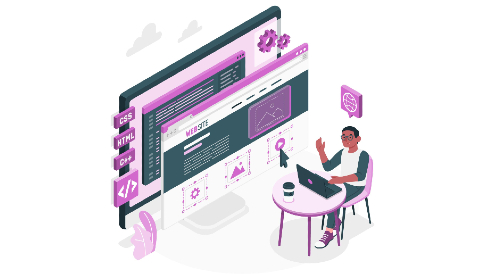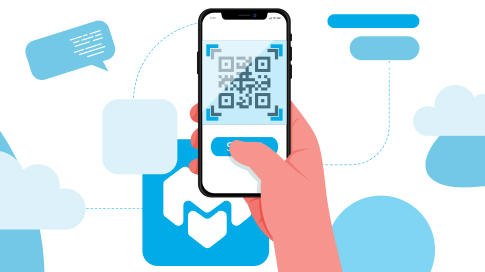An Ethical Guide To Web Scraping For Dynamic Site Content
Web scraping can be a door to broadening the reach of your data collection. However, as it often ventures into legal and ethical gray areas, navigating through dynamic site content responsibly is crucial. To unpick this sticky issue, let’s discuss what it means to take an ethical approach to web scraping, the important tools used, and some future trends that will guide you in this endeavor.
Understanding the Basics of Web Scraping
In its simplest form, web scraping involves extracting data from websites. Developers employ a powerful technique for gathering and copying specific information into a central database or spreadsheet. This process can be automated, often using bots or spiders combing site content to harvest desired details more efficiently. Understanding these basics gives us the foundation to discuss web scraping in greater depth, including ways to approach dynamic site content scrupulously.
Importance of Ethics in Web Scraping
While immensely useful, it’s important to remember that when utilising Selenium and Python to help with scraping efforts, this must be carried out ethically to respect privacy and copyright laws.
An ethical approach ensures that these activities remain within legal boundaries and do not escalate into data breaches or veer into what could be considered illegal hacking.
Even in pursuing your scraping aims with technologies such as Selenium for dynamic content or leveraging Python’s powerful libraries for efficient crawling, it’s crucial to tread softly by respecting website terms of use, robots.txt file constraints, and the rights of others’ intellectual property. Let’s look at how to achieve this.
How to Scrape Dynamic Site Content: A Step-by-step Guide
When dealing with dynamic site content that requires interactivity for full access, we must encourage tactful yet effective techniques. Here’s a basic step-by-step guide:
- Identify the Target Data: Decide what specific information you want to scrape from the website. Clear objectives save time and aid precision.
- Understand the Website Structure: Investigate how target data is structured within the webpage’s HTML structure or dynamically loaded via Javascript.
- Choose Your Tools Wisely: For dynamic sites, consider using versatile automation libraries like Selenium which can mimic human browsing behavior.
- Write Your Code: Utilising Python coupled with Selenium, write your script to initiate scraping activities. Focus on tasks such as navigating pages, handling cookies and sessions, and fetching source code.
- Run Tests and Refine Code: Commence initial runs of your scraper, ensuring it efficiently retrieves desired data without overwhelming target server resources. Make any necessary adjustments to enhance reliability and efficiency.
Technological Tools and Techniques for Efficient Web Scraping
Efficient web scraping relies on a mix of potent technologies and smart techniques. Here are some you might want to consider:
- Programming Languages: Python is preferred by many for its readability, wide library support like BeautifulSoup or Scrapy, and compatibility with Selenium.
- Powerful Libraries: Selenium shines when dealing with dynamic content as it simulates browsing behavior – ideal for navigating interactive web pages.
- Helpful Environments: Jupyter notebooks can be beneficial in drafting, understanding, and modifying your scripts easily while visualizing extracted data.
Remember that the tools themselves don’t define the efficiency of your scraping activities. Rather it’s how you use them. Strive towards developing an optimized solution rather than a brute-force approach, showing respect to the website operators and other users sharing bandwidth resources.
Considerations When Dealing with Legal Constraints
While web scraping has immense value, respecting legal considerations is crucial. Here are some things you should pay attention to:
- Privacy Laws: Always use the collected data responsibly, just as you would when building a GDPR compliant website. Respect user privacy and never scrape personal information without explicit consent.
- Copyright Laws: Be aware that certain types of content may be copyrighted and cannot be reproduced without permission.
- Website’s Terms of Use: Adhere strictly to any terms a website may have concerning its usage, including those specifically stating prohibitions against web scraping.
- Robots.txt Files: This important piece of website metadata often provides guidelines on what pages or elements can be scraped.
Legal boundaries can vary from one jurisdiction to another. If in doubt, always err on caution or seek advice from a legal professional.
Future Trends and Best Practices for Ethical Web Scraping
As technology advances, so do our methods to scrape web content. Here are some future trends and best practices in ethical web scraping:
- Bounded Automation: While automation does speed up data collection, consider using limits to prevent adverse impacts on website operation or user experience.
- Front-end Ethics: Avoid mining sensitive user data whenever possible. Prioritize transparency by informing users if their public information is being scraped.
- Respect Legal Boundaries: Laws concerning scraping can vary globally, as mentioned. Stay updated on these laws as they evolve.
Above all else, remember that ethical web scraping isn’t just about following rules but also about respecting the digital ecosystem you’re a part of.




Leave a Reply